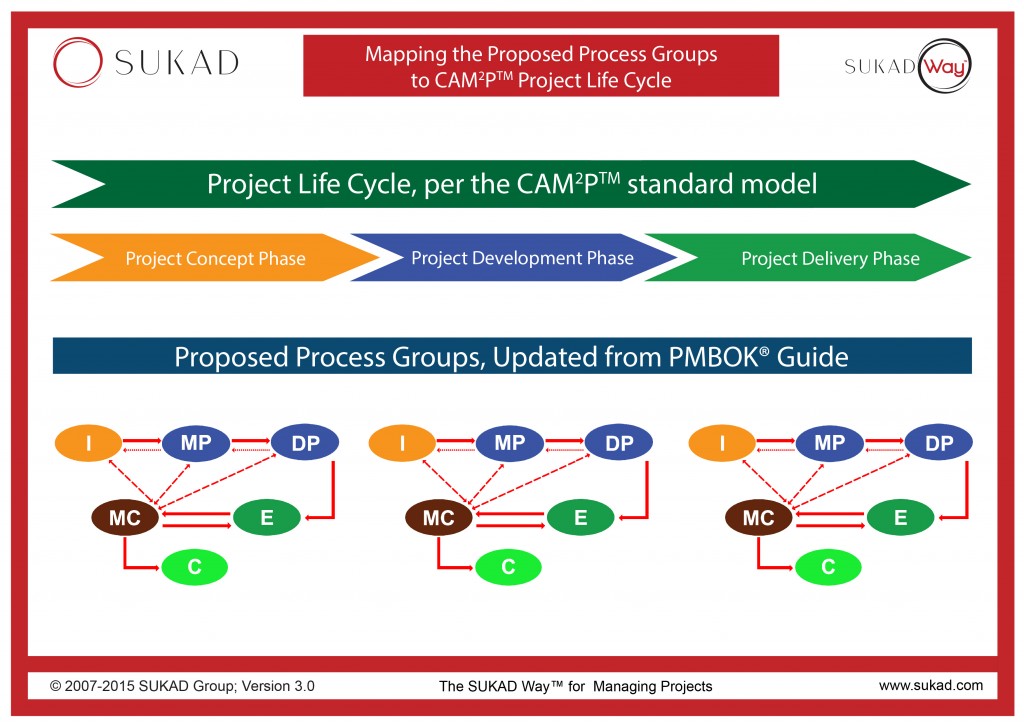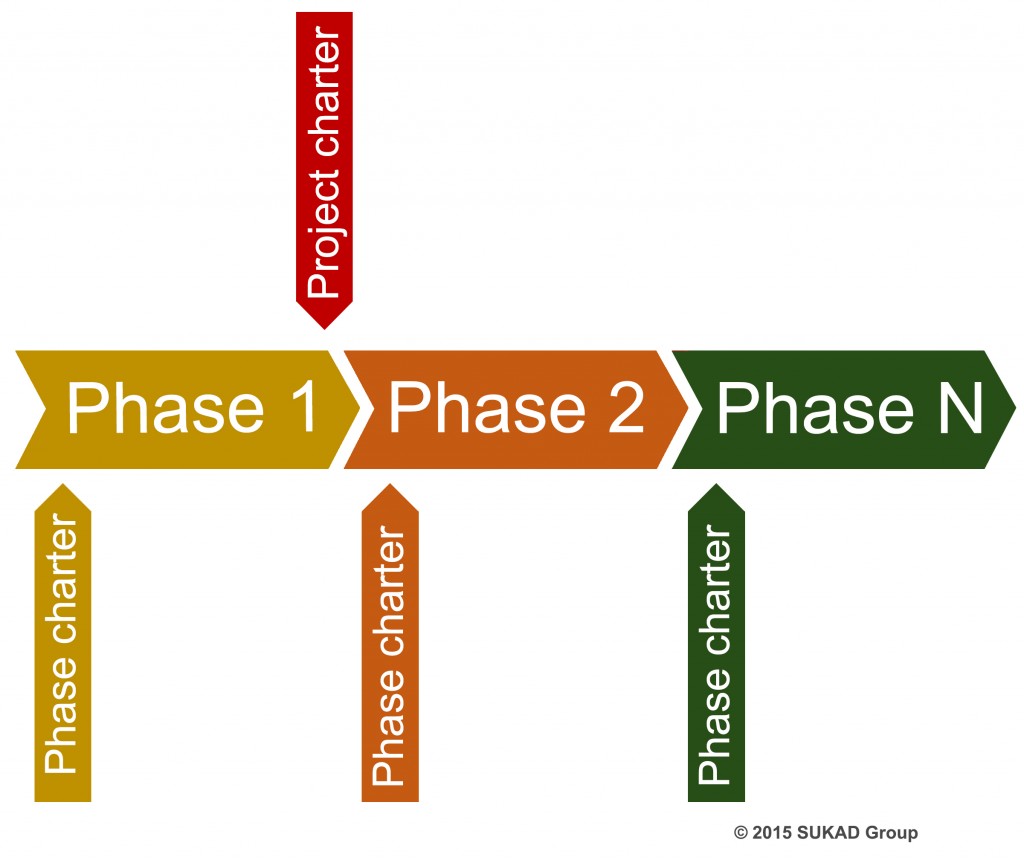Introduction
Over the years, the PMBOK Guide has the ANSI stamp on the cover, giving the impression that the whole guide is an ANSI Standard. However, inside the guide, one can find a mention that the ANSI Standard was part of Chapter 3 in the 3rd and 4th edition of the guide and an Annex in the 5th edition. Yet, people missed this point.
Now, with the 6th edition that is work in progress, and for the first time, PMI has clearly stated that A Guide to the Project Management Body of Knowledge (PMBOK Guide) is actually two things (1) the Project Management Standard (only about 40 pages) and (2) the Guide (the rest of the book).
Further, in March they released the exposure draft of the standard section, ONLY. This is released for review and comments by the professional community. Therefore, it is important to realize the difference and that not the whole guide is standard —— it is a GUIDE and include the Standard. It is unfortunate that when we used to say this (that there two things not one), like in this blog post, people thought we are either wrong, or criticizing, or both.
Why is the distinction relevant? Please refer to this blog post for further reading.
So what is changing in the PMBOK Guide?
In this post, we will focus on the Standard Section since the main guide is not released yet.
In the standard there are a few parts and today we focus on the first two parts, the Introduction and Initiating Process Group. We will highlight changes and important points.
The Introduction to the PM Standard
General Statement
- As expected, the standard is keeping the focus on “This standard describes the processes necessary to manage most projects most of the time.”
- The standard is still expected to be separated from the guide, in its own section.
Project Success
- In this edition, they [They refer to the volunteers doing the work] are expanding the definition of project success, more than the 6 lines that was in the 5th edition.
- They are adding benefits realization in the same section as project success.
- In this section they still mention the need for an operation period that would be necessary to measure project success. However, the change is that they are saying, now, this is for the PMO (or other organizational units) to handle. In the 5th edition, they had stated that the project life cycle could be extended to cover this period; implying that the project manager will be responsible for measuring success.
Pre Project
- The standard is still keeping the pre-project work as outside the project life cycle.
- Pre Project: “Work performed prior to initiating a project can include opportunity identification, business analysis, analysis of alternatives, development of a business case, feasibility studies, and market research.”
It is interesting to see business analysis here and the emphasis on business analysis.
Do you think this is related to the PMI-PBA certification?
It is also noticeable that quite a bit of the BA work is outside the project life cycle; per the Standard.
Phase Gates
After years of absence, since the first 1996 edition I think, the concept of gates is back. In recent editions it was implied but not explicitly stated. The definition: “Phases are generally time bounded, with a start and end or control point. At the control point, the project charter and business case are reexamined based on the current environment.” The red emphasis is the author’s. Basically, this is confirming what we have been saying via CAM2P™ that at any of the gates, up to the point of no return, we could cancel the project.
It is also worth mentioning that even the charter is revisited. We have wrote about this in past articles and many professionals would not agree with us thinking the charter is issued once and is fixed. Others, understood that the charter could be updated.
Process Groups and Project Life Cycle
In recent editions, there were a couple of images in Chapter 2 showing two possible projects with repeating process groups per phase but people seem not to notice these images. Now there is an image in the standard, where the volunteers are finally representing the link between process groups and a project life cycle – and – also showing gates.
We cannot show the image for copyright reasons but it represent the same concept we show in the SUKAD image presented here.

SUKAD CAM2P Phases and Process Groups
Here are some of the quotations on the process groups and project life cycle.
“The Process Groups are not project phases. If the project is divided into phases, the Process Groups interact within each phase. In fact, it is possible that all Process Groups could be conducted within a phase”
This is another quotation on the same point: “As projects are separated into distinct phases or subcomponents, such as concept development, feasibility study, design, prototype, build, or test, etc., all of the Process Groups would normally be repeated for each phase until the completion criteria for that phase have been satisfied.”
Knowledge Areas
The number of the knowledge areas remain the same. However, they changed the names of two knowledge areas, these are:
- Time; now it is Project Schedule Management
- HR; now it is Project Resource Management; using the term resource – representing all resources not just people. This change align the PMBOK Guide with ISO 21500 since the ISO guide uses the wider view of resources rather than human resources.
Initiating Process Group
There are no changes here but will share some notes since they are emphasizing the repetition of the process groups and processes across the phases of the project life cycle. Again, the concept has always been there, yet it is still one of the most common areas of confusion. Further, as you read, notice the concept about charter and authorization.
The purpose of the initiating group supports the argument we have been making for years; notice the blue emphasis is ours “Those processes performed to define a new project or a new phase of an existing project by obtaining authorization to start the project or phase.”
“In such projects, the Initiating processes are carried out during subsequent phases in order to validate the decisions made during the original Develop Project Charter and Identify Stakeholders processes. Revisiting the Initiating processes at the start of each phase helps to keep the project focused on the business need that the project was undertaken to address.”
In closing this part, we re-share an image from the past. In this image, we clearly show
- The Project Charter, after Phase 1 (Pre Project in PMBOK Guide).
- A Phase Charter (Authorization) for the Pre Project Phase – it is still a phase after all.
- A Phase Charter for each subsequent phase, which could be limited to the phase or an update of the project charter.

Closing Remarks
It is worth noting in closing this post the following:
The project life cycle is squeezed between pre project and post project – in other words, the project life cycle covers only part of the project; depend on the perspective of the viewer. The pre project is about needs, business case, and other justification (outside the life cycle) and the post project is about benefits realization. Whereas in the SUKAD CAM2P Model, the project life cycle starts with the idea, including the pre-project and ends with closure.
In the SUKAD Model we also have four dimensions of project success, versus one in the Standard. Two of the dimensions are definitely within the project life cycle, the third could be before closure or shortly after that, and the fourth dimension is about benefits realization, which is the one mentioned now in the Standard for the first time.
The emphasis on the process groups repeating is good and we hope it will clarify many of the debates we have had over the years.

Trackbacks/Pingbacks